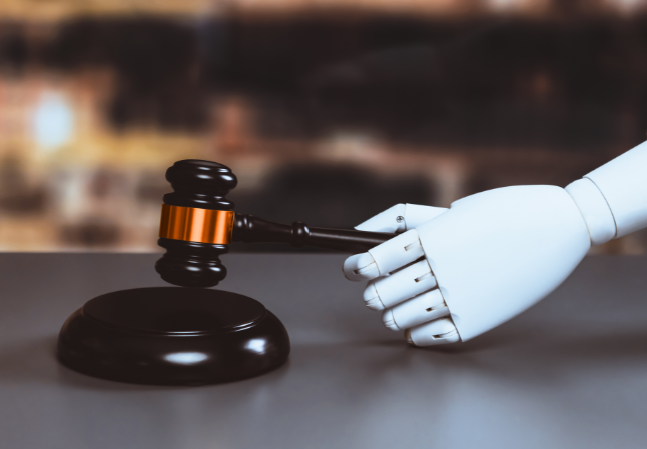- videocam On-Demand
- calendar_month August 26, 2024 @ 1:00 p.m. ET./10:00 a.m. PT
- signal_cellular_alt Intermediate
- card_travel Personal Injury and Med Mal
- schedule 90 minutes
Noneconomic Damage Amounts in Personal Injury Cases: Linking the Value to Injury Following Recent Decisions
Welcome! Save 30% on all CLE, CPE, and Professional Skills webinars, plus 15% off any annual pass with code HOLIDAY25
About the Course
Introduction
This CLE webinar will offer guidance on how plaintiffs can prove or defendants can challenge the amount of noneconomic damages. The panel will discuss new and clarified burdens of proof, plausible strategies for connecting amounts sought with the evidence, discovery strategies, and the types of arguments and techniques that get verdicts reversed on appeal.
Description
Noneconomic damages such as mental anguish, pain and suffering, loss of enjoyment of life, emotional distress, etc. are the main component in most "super" verdicts. Plaintiffs seek to maximize them; defendants try to rein them in. Recovering them is a two-step process: establishing the existence of noneconomic injuries and then giving them a value.
Regarding Step 1, courts have always required plaintiffs to offer credible evidence that noneconomic injuries exist: their nature, duration, severity, and their connection to the defendants' actions. Courts, however, until recently, have given Step 2 short shrift. Not anymore.
Now many courts are requiring plaintiffs to show a rational connection, based on the evidence, between the injury and the amount claimed. This will require new strategies and careful planning.
Listen as this experienced panel of litigators offers insights and strategies on how to develop the evidentiary basis for valuing what is by definition subjective how to demonstrate a connection between the injuries sustained and the amount of damages requested.
Presented By
.jpg)
Mr. Offenhartz is a business attorney who represents clients in the finance, medical, construction, real estate, and culinary industries. He has significant experience managing all phases of litigation, including preliminary investigations, discovery, depositions, settlement negotiations, mediation, motions for summary judgment, trial and appeals. Additionally, Mr. Offenhartz serves as outside counsel for several small, medium, and growing businesses that need day-to-day legal advice for their growing companies. His practice areas include construction claims and litigation, catastrophic injury and accident litigation, product liability, commercial trucking and transportation litigation, premises liability and hospitality claims litigation, and insurance coverage and related matters.

Prior to founding Randels Injury Law, Ms. Randels worked at two prominent Atlanta area injury firms for the better part of a decade. Since 2020, she has been recognized as a Super Lawyers Rising Star, an honor given to only 2.5% of the lawyers in Georgia. 2024 marks her fifth year being recognized. Ms. Randels has also been recognized as one of Georgia Trend's Legal Elite, named in Best Lawyers in America -- Ones to Watch, and is a member of the National Trial Lawyers Top 40 Under 40. Since 2020, Ms. Randels has been a member of the Georgia Trial Lawyers Association's Executive Committee, serving as chair of the New Lawyers Division, the Communications Committee, and the Women's Caucus.
-
This 90-minute webinar is eligible in most states for 1.5 CLE credits.
-
Live Online
On Demand
Date + Time
- event
Monday, August 26, 2024
- schedule
1:00 p.m. ET./10:00 a.m. PT
- Strategies for valuing noneconomic damages
- Types of evidence that may be used
- Discovery strategies
- Use of experts
- Recent cases
- Standards of review on appeal
The panel will review these and other key issues:
- What are some methodologies that may be used to calculate the amount of pain and suffering damages?
- What types of arguments are prohibited?
- What is unsubstantiated anchoring and how is it detected?
Unlimited access to premium CLE courses:
- Annual access
- Available live and on-demand
- Best for attorneys and legal professionals
Unlimited access to premium CPE courses.:
- Annual access
- Available live and on-demand
- Best for CPAs and tax professionals
Unlimited access to premium CLE, CPE, Professional Skills and Practice-Ready courses.:
- Annual access
- Available live and on-demand
- Best for legal, accounting, and tax professionals
Unlimited access to Professional Skills and Practice-Ready courses:
- Annual access
- Available on-demand
- Best for new attorneys
Related Courses
Recommended Resources

Making Continuing Education Work for You, Anytime, Anywhere
- Learning & Development
- Career Advancement

Getting the Most Out of BARBRI Resources
- Learning & Development
- Business & Professional Skills
- Talent Development


